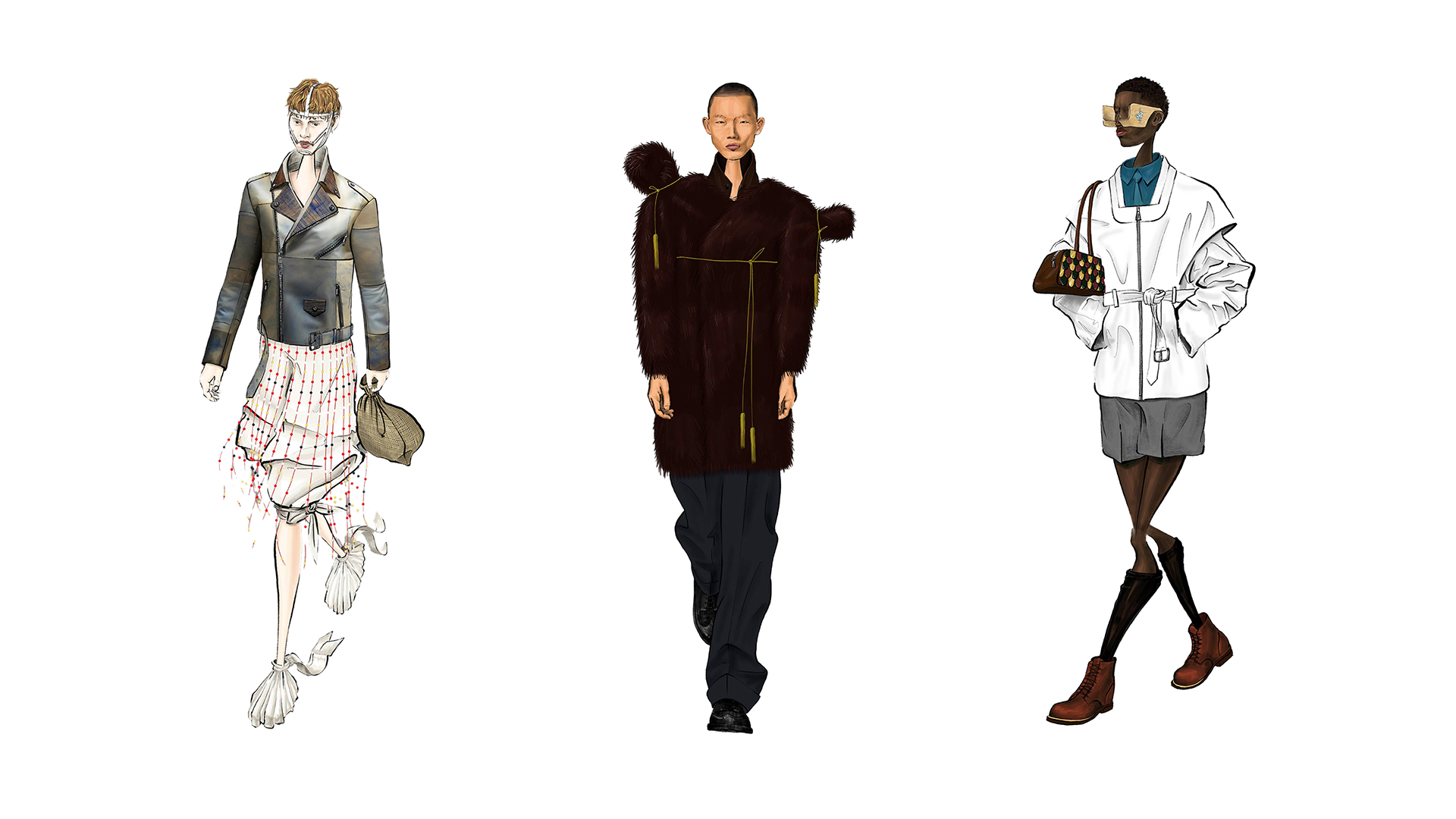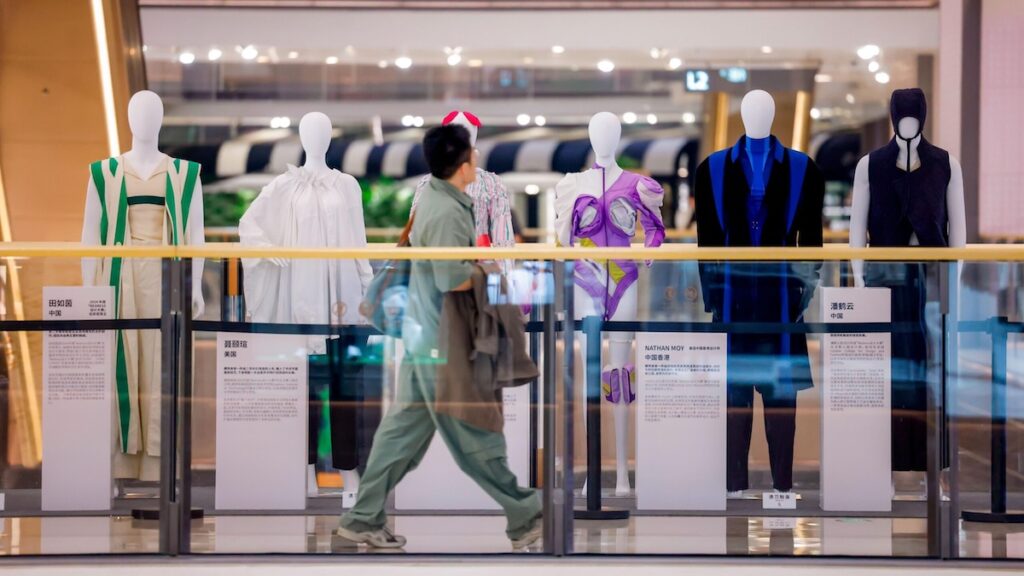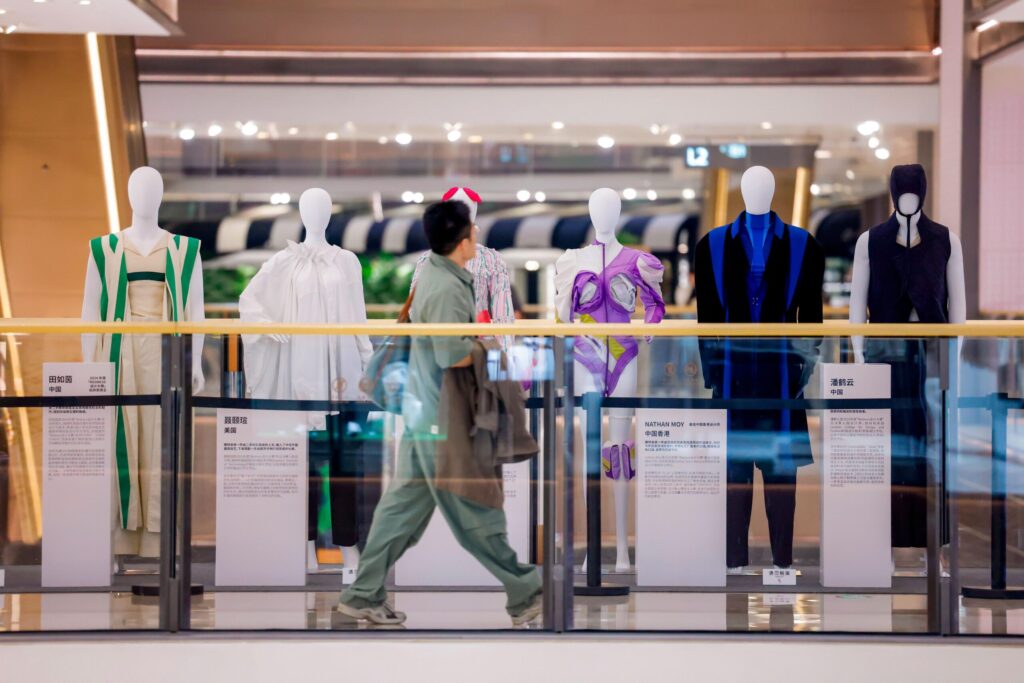Redress Design Award Collection
Hawon’s Redress Design Award collection, ‘Brown Bagging’, is inspired by the practice of saving a harvest’s leftover seeds for the next farming season. Taking what might otherwise be left behind in fashion, the collection makes use of waste textiles including recycled RE-nylon, cotton blends with international sustainability certifications, plus faux fur offering bulk, tacility, and warmth. A jacket is made from biodegradable bioplastics containing gelatin (a byproduct of the meat industry) and agar-agar (a natural polymer derived from red algae).







